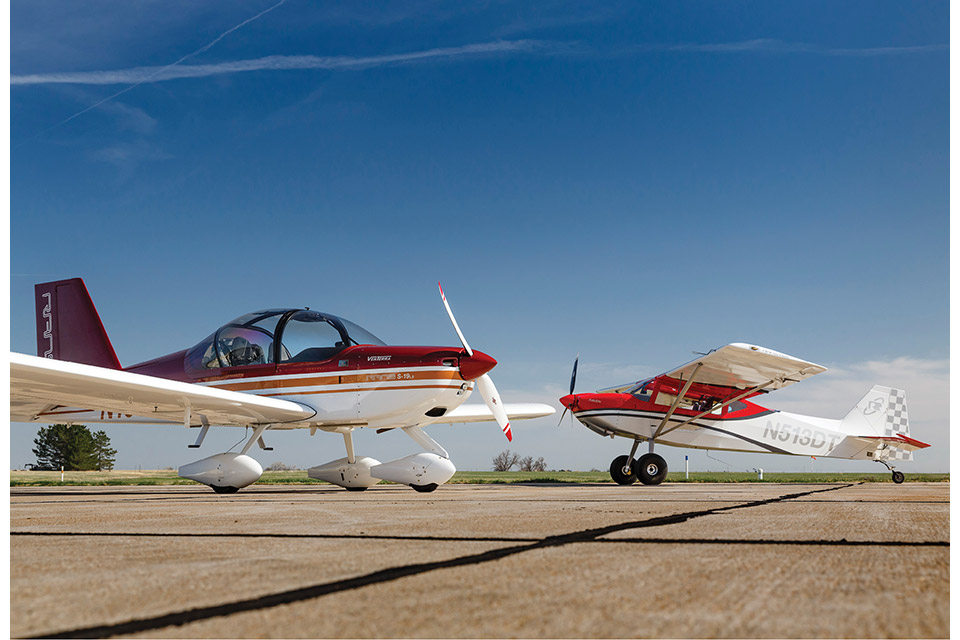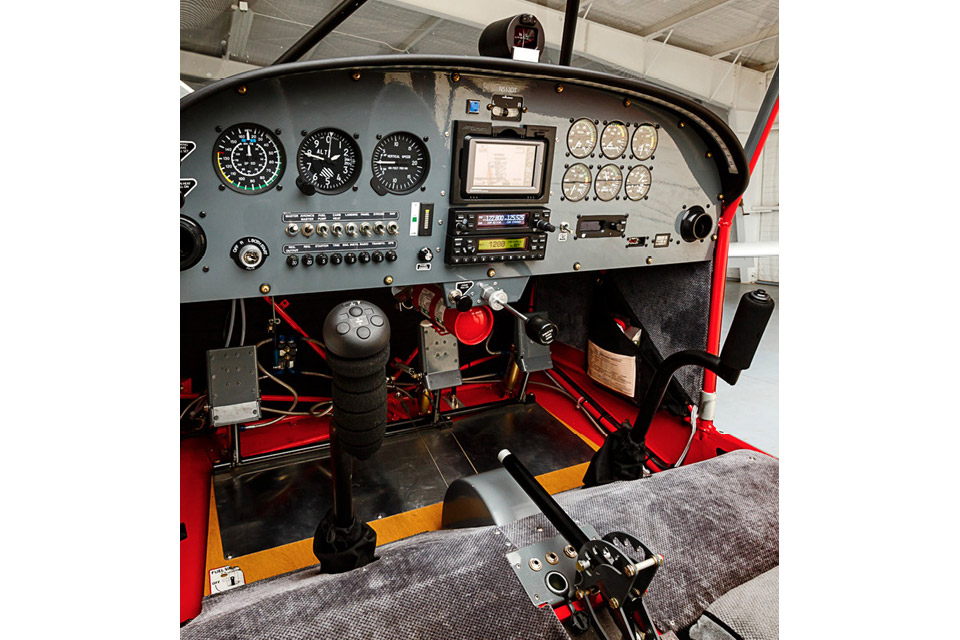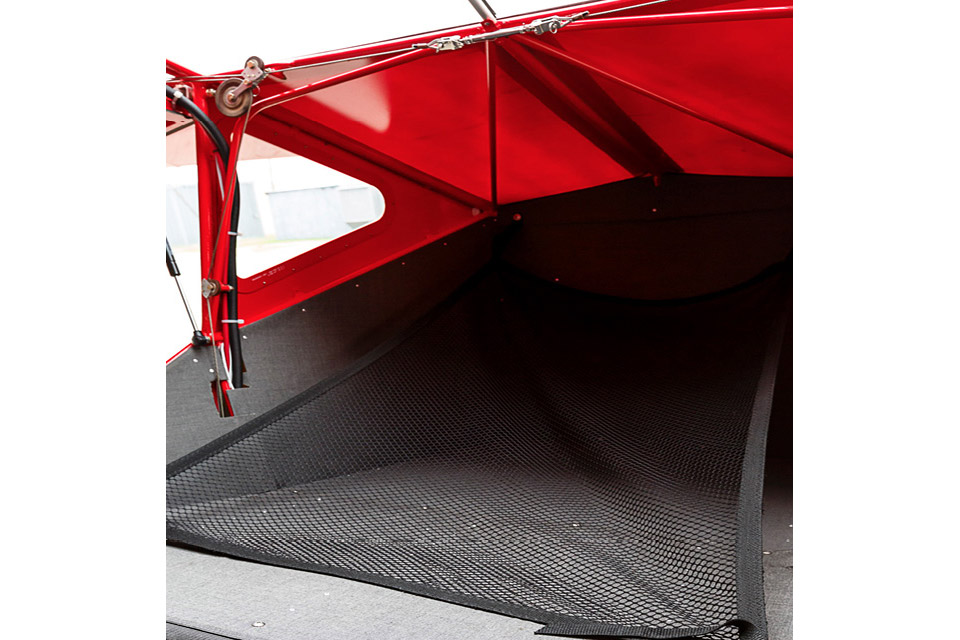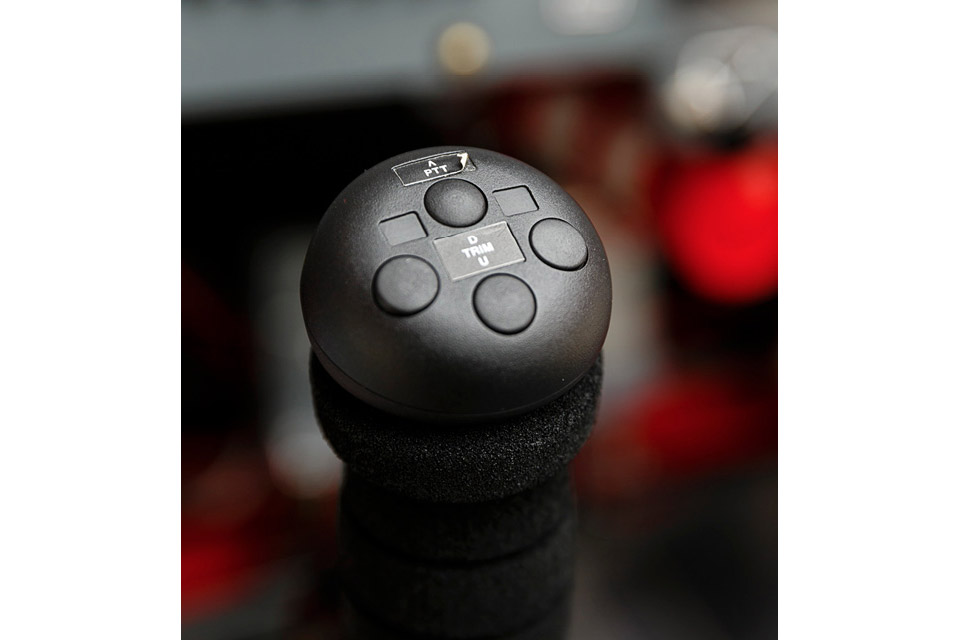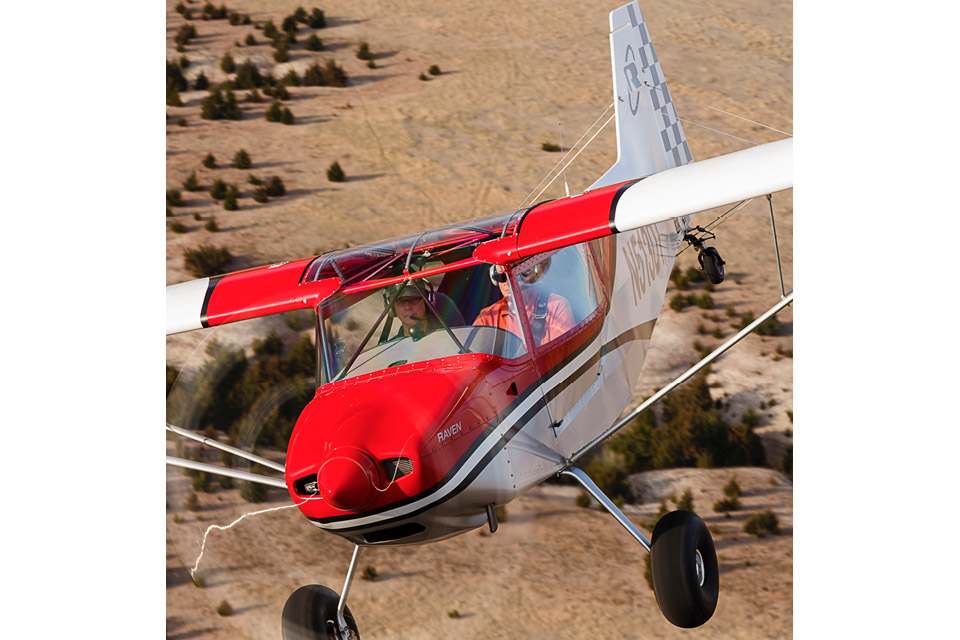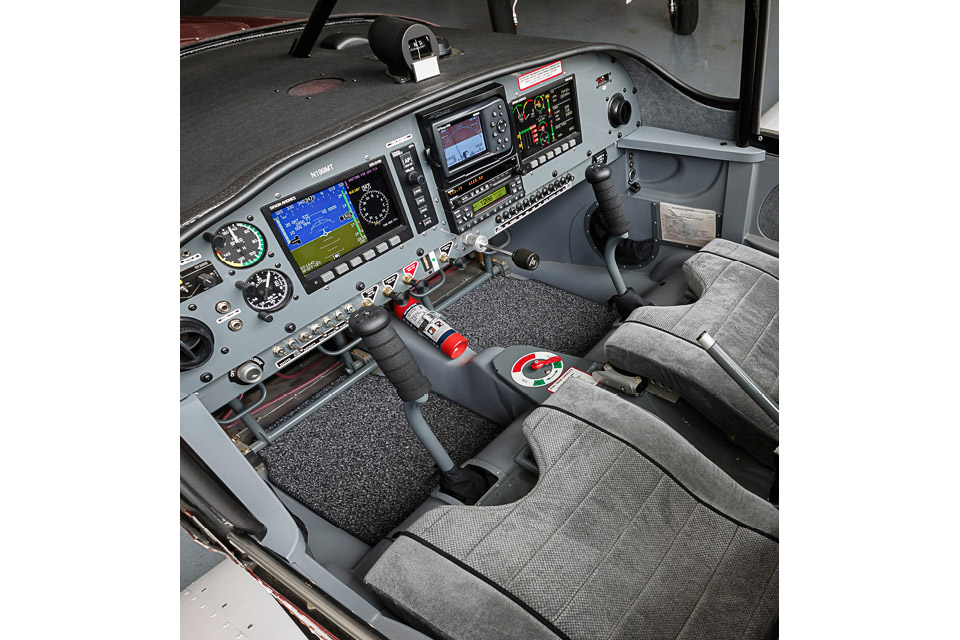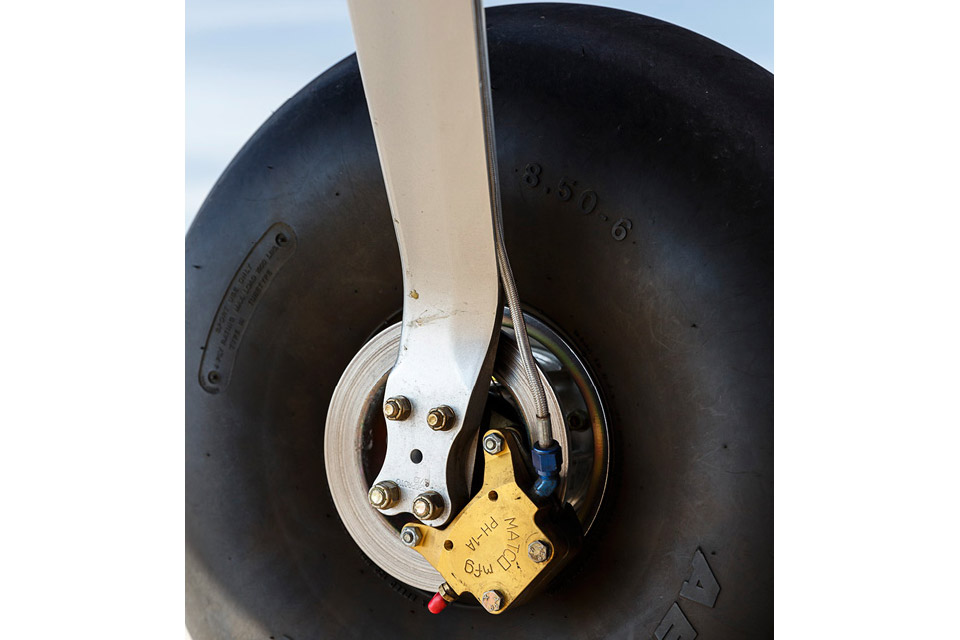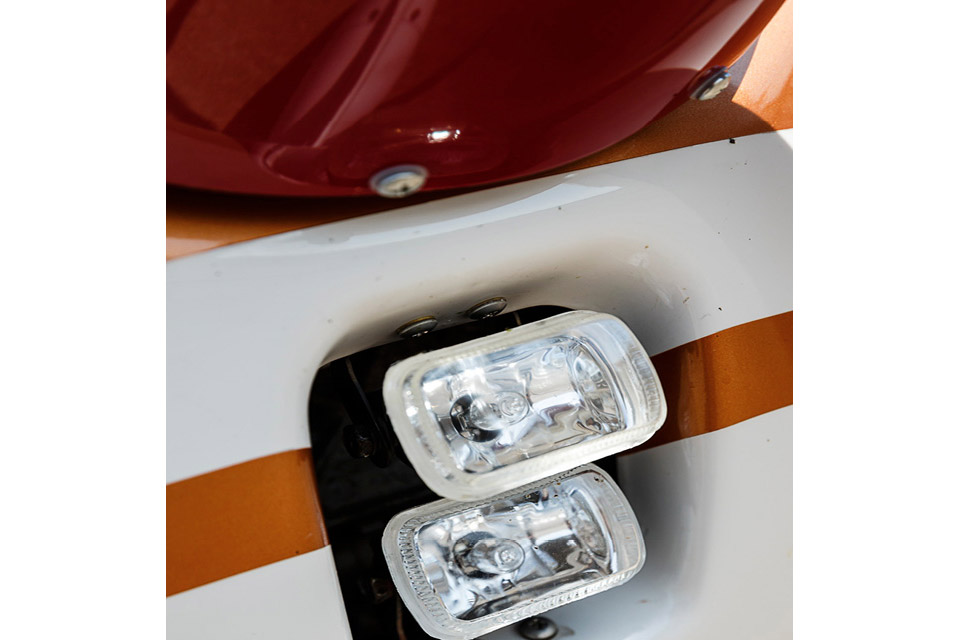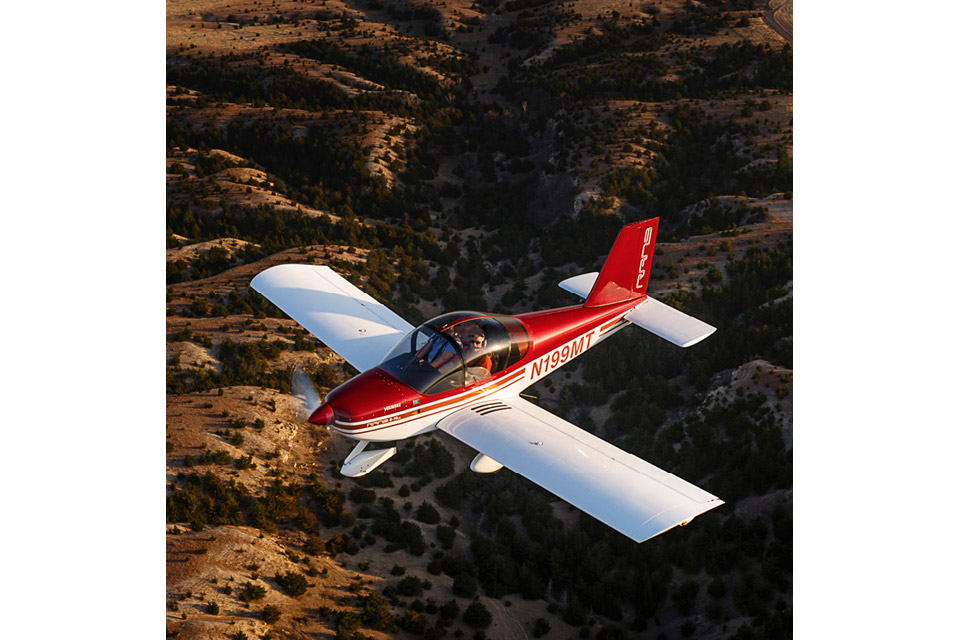Light Sport aircraft: Tale of two Rans
Rans makes little airplanes with big personalities
Up ahead is the tailwheel Rans S–20 Raven, happy with its life as a flying utility truck prowling unimproved runways near Hays, Kansas. The high-wing kitplane was submitted for approval as a Light Sport aircraft in late 2015. Close behind for this photo flight is my tricycle-gear, low-wing Rans S–19LS Venterra (LS for Light Sport), speedy and agile—and bored to death with the Raven’s 98 knots.
Like cartoon aircraft in the Disney movie Planes, each Rans model has its own distinct personality. If the Raven is embarrassed by the fancy 115-knot Venterra, it’s not about to show it. Raven has a plan to get even. When the photo flight is complete the Venterra, its dual Dynon cockpit displays twinkling through the canopy, races back to the airport where smooth runways and a warm hangar await at Hays Regional Airport. The Raven does just fine with a single Garmin aera 560 and analog instruments very much like those from decades ago. That’s the sort of thing that will keep the Raven’s factory-built price down to $125,000, while the Venterra, now offered only as a full-option luxury model, costs $165,000.
On the next flight the simply named Raven, not that fancy Venterra moniker, heads a few miles out of town toward the grave of Elizabeth Polly. She comforted soldiers dying of cholera in 1867 when Hays was still Fort Hays, and she climbed Sentinel Hill to take a break from the misery nearby. When she caught the disease herself, she wanted to be buried at the top. Now she is known as the Blue Light Lady and is said to still be walking atop the hill in a glowing blue prairie dress. Locals say they’ve seen her light. There is a marker at the top of Sentinel Hill served by a road intended only for Jeeps, but no Elizabeth. No telling where the real grave is.
Rans Designs owner Randy Schlitter—hence the company name, Rans—takes aim at the road, really just two tracks; lands; and powers uphill to the marker. Locking a brake, he turns 180 degrees, adds full power from the 100-horsepower Rotax, and lifts off with only minor jostles, thanks to the tundra tires.
Respects paid. Try that on your little wheels, Venterra. And where did you get the name, anyway? Schlitter says the vent is from the Latin ventus, for wind, and terra is Italian for Earth. The result is Wind of the Earth.
Venterra sees the world differently. There’s a reason it is always near the front of the Rans Flight Department hangar a few miles from the factory, and the Raven is always at the back. That’s because it believes it’s prettier. And the name? To it, poetry. The name rolls off the tongue, especially if you trill your Rs like this, Venterrrrrra, and use a French accent for “vent” to an Italian one for “terra.”
It takes so long to say the name there’s little time for preflight. Like any thoroughbred, the Venterra can be a little fussy. There must not be two people on the steps behind the wing at the same time, or Schlitter will have to hold the nose down. How do I know? Hmm, I’ll skip that part. As with any sliding canopy, you’ll need to know where not to grasp as you step into the cockpit, otherwise the canopy could be damaged. Like those of that country cousin, Raven, seats are adjustable—unheard of in most Light Sport aircraft.
The demonstrator Venterra wasn’t yet a city dandy, lacking the leather seats subsequent models will receive. For taxi I loosened the throttle lock nut and the throttle immediately sprang forward, a characteristic of the Rotax 912 ULS engine design. I tightened it again and operated it by overcoming the friction.
Taxi requires tapping one toe brake and then the other to steer the castering nosewheel. At first I also stabbed at the rudder pedals, thinking a blast of air past the rudder would help, but it didn’t. Winds were 90 degrees to the taxiway at 10 to 12 knots, and that complicated things. On the second flight with calm winds, I suddenly seemed to have mastered taxiing the Venterra. The tailwheel Raven taxied as any tailwheel, and turning left and right only aided forward visibility (it can be converted to a nosewheel aircraft if you desire). Its throttle seemed less spring-loaded.
No 1,320-pound aircraft is likely to need lots of runway for takeoff. The Venterra requires lifting the nosewheel as soon as possible and waiting for it to take flight when it chooses, true to its diva personality. The Raven is ready to fly at the first application of power—OK, nearly ready—and Schlitter prides himself in lifting it off and landing in 100 to 200 feet. I wasn’t measuring.
It’s easy to overcontrol any light aircraft on landing. My first Venterra landing was skittish, applying too much back-pressure and rising a few feet. By the second flight I was ready for it, greased it on, and declared the problem solved. Throughout the history of Light Sport aircraft, pilots transitioning from heavier aircraft—and almost any aircraft is heavier—have overcontrolled at first. Touchdown speeds for both aircraft are slow enough for the pilot to make adjustments, with the Raven tending to float more than the Venterra.
In the air, stalls were docile in the Raven, and slightly sportier in the Venterra. On the first flight the tanks were evenly loaded and the Venterra demonstrated only a slight right-wing drop in the stall. After refueling the right tank, resulting in an uneven fuel load, the right wing snapped down following a full stall, although altitude loss was minimal.
Schlitter believes in control harmony, while most Light Sport manufacturers worry little over such niceties. For him it’s a matter of pride. The self-taught designer finds that his calculations are usually right when checked over and refined by trained aeronautical engineers. Control harmony, he said, doesn’t mean aileron forces exactly equal pitch forces. It means the pilot thinks the forces are equal. Most people are stronger when pushing or pulling, so pitch forces are set slightly higher. Side-to-side aileron forces are set lower, and the result is that the pilot thinks the forces are equal.
Schlitter also believes aircraft capabilities shouldn’t be exaggerated. After claiming the Venterra is a 115-knot airplane, he proceeded to demonstrate its speed using the autopilot that comes standard, and came up with slightly more than 113 knots. Given that it was a heavy load and a gusty day, I’ll grant him the additional 1.6 knots.
The creation of so many diverse designs over the years—from ultralights to kitplanes, totaling 5,000 sales worldwide—is testimony to Schlitter’s designing skill. (He sold the bicycle production line that was part of the factory until December 2014.) A propeller-driven concept model in his office that looks like a jet shows he intends to create additional aeronautical personalities in the future. “I won’t say I’m working on a drone [that could carry humans] and I won’t say I’m not,” he added.
Of course, airplanes don’t have real personalities, but it does make you wonder what happens inside the hangar at night after the door closes. Maybe that’s why locals think they have seen the Blue Light Lady. She is on her way to Rans Airport to calm any personality clashes at the Rans Flight Center.
Email [email protected]
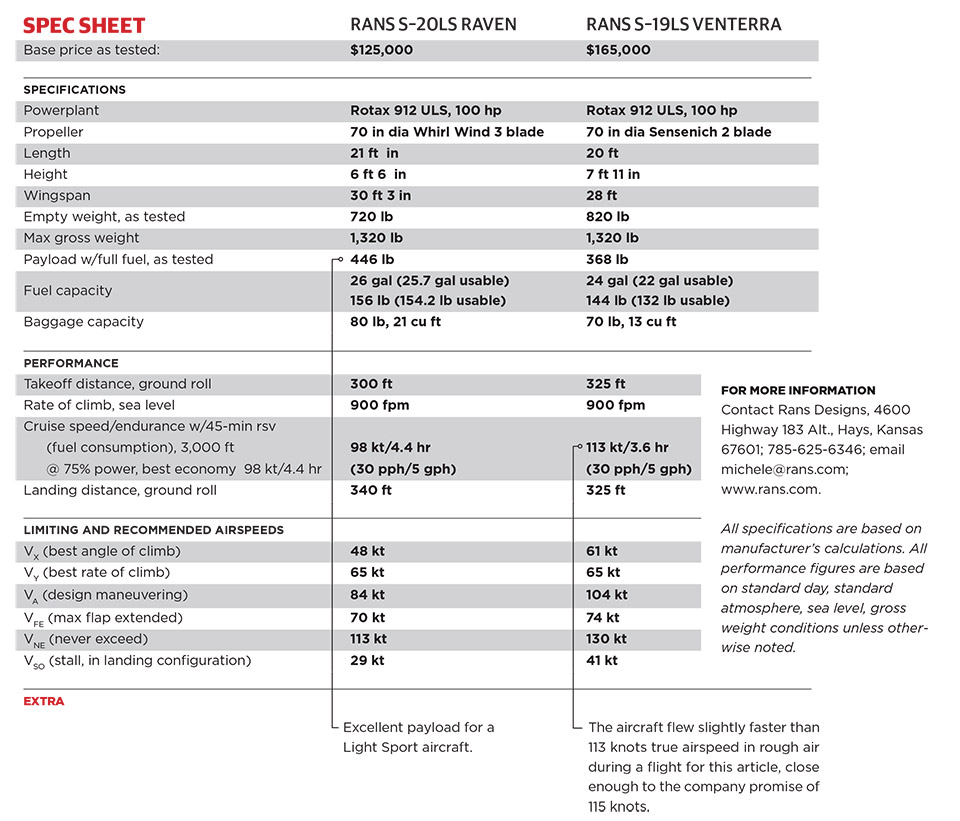
Raven to be approved soon
The S–20 Raven was not yet approved as a Special Light Sport aircraft when this article was written. It first flew in December 2013 and was later offered as a kitplane. Approval is expected in 2016.
The tandem-seat Rans S–7 Courier is approved as a Special Light Sport aircraft, but the one under construction when this article was prepared was not yet completed. Both the S–20 and the S–19 Venterra have side-by-side seating.
All Rans aircraft are also available as kitplanes, while the Special Light Sport models are factory built. —AKM
Pros and Cons
Raven
Pro
• The S–20 Raven can land anywhere.
Con
• 98 knots isn’t Venterra fast.
Pros and Cons
Venterra
Pro
• The S–19 promises and delivers speed.
Con
• Steep learning curve for taxi.

